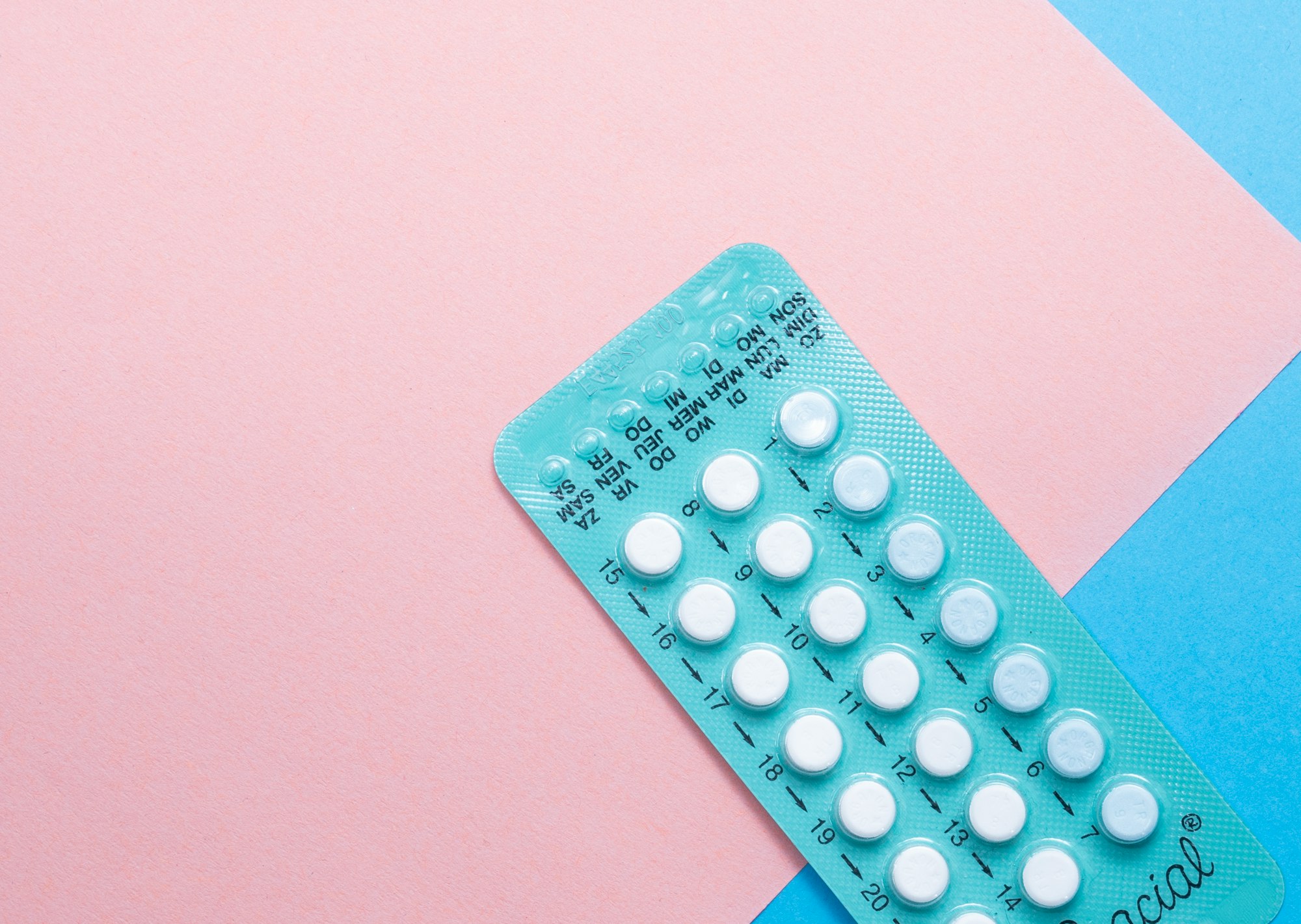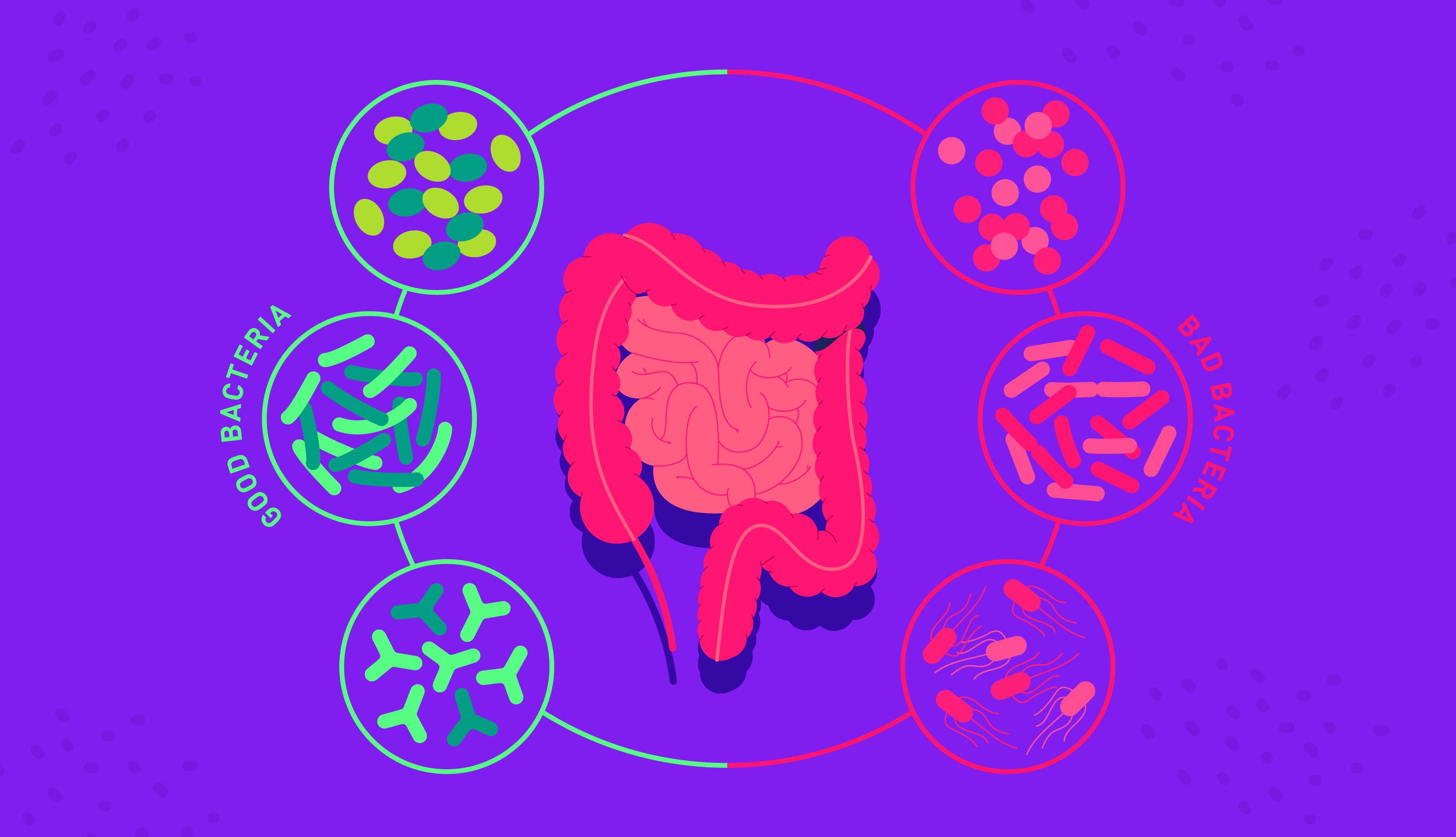Discover the connection between the gut microbiome and oestrogen production, including its relation to menopause and influence on breast cancer risk.
The discovery of the human microbiome opened a new frontier in science and revolutionised our understanding of nutrition, human anatomy and disease risk. So far, our gut bacteria have been associated with depression, obesity, inflammatory disease risk and immunity.
Although the research is preliminary, this trillion-strong community of bacteria appear to play an essential part in oestrogen production and, by extension, menopause. Not only can gut bacteria potentially influence the severity and duration of menopause, but they might also impact our risk for numerous diseases, particularly breast cancer in postmenopausal women.
Table of contents:
- Menopause and oestrogen levels
- Signs and symptoms
- Treatment options and hormone replacement therapy
- The estrobolome and oestrogen levels
- Oestrogen: not too much, not too little
- The microbiome and oestrogen-positive breast cancer
- Summary
Menopause and oestrogen levels
Menopause is when a woman ceases to have her periods and can no longer become pregnant naturally. The process typically occurs between 45 and 55, though around 1 in 100 women undergoes menopause before 40.
Others may undergo surgical menopause, meaning they have their ovaries removed. The procedure is known as oophorectomy and is most commonly performed to reduce a woman’s risk of ovarian cancer.
Menopause is triggered by declining oestrogen and progesterone levels, two sex hormones that are mainly produced in the ovaries. Both oestrogen and progesterone help maintain female reproductive health and regulate the menstrual cycle. Beyond regulating the reproductive process, oestrogen also influences mental and cardiovascular health alongside bone density.
Essentially, menopause is puberty in reverse, and like puberty, it is defined by hormonal shifts which can last for years. The severity and duration of menopause will vary from person to person, influenced by genes and lifestyle factors.
☝DID YOU KNOW?☝The age you undergo menopause is thought to be genetically determined. With that said, smoking and chemotherapy can accelerate ovary decline.
Low oestrogen symptoms
The menopause transition often starts months, if not years, before the final menstrual cycle. This period leading up to the last period is known as perimenopause and is often defined by hot flashes and irregular periods.
According to the National Institute Of Ageing, avoiding alcohol, tobacco, coffee, and spicy foods can help alleviate hot flashes.
Besides hot flushes, common menopause symptoms include:
- vaginal dryness and sexual discomfort
- Irritability and difficulty concentrating
- insomnia
- low mood or anxiety
- reduced sex drive
- osteoporosis
- urinary incontinence
- unusually heavy or light periods
- weight gain
If you are struggling to function due to menopause symptoms or experiencing menopause symptoms before the age of 45, reach out to your GP. Your doctor will likely be able to diagnose menopause based on your symptoms, though hormone testing can be used to confirm the diagnosis in those with premature menopause.
Treatment options and hormone replacement therapy

Numerous treatment options are available to help alleviate menopause symptoms and restore quality of life. Common treatments include:
- Cognitive behavioural therapy for low-mood or depression
- Vaginal oestrogen creams to combat dryness
You can also opt to undergo hormone replacement therapy to stabilise your oestrogen levels.
It should be noted that there are risk factors associated with HRT, including a slight increase in your risk of stroke, blood clots, breast cancer and heart disease.
According to the NHS, the risks are generally low and outweighed by the benefits, but this depends on which HRT you take, your age and personal risk factors.
In particular, postmenopausal women over the age of 60 are more likely to experience complications than younger women, especially when taking combined HRT (tablets containing oestrogen and progesterone, for example).
Before undergoing any form of HRT, speak to your doctor about the benefits and risks. HRT might not be recommended depending on your family history, age, and whether you have undergone a hysterectomy.
The estrobolome and oestrogen production

Over the past ten years, the gut microbiome has been linked to numerous functions and health conditions, including mood, metabolism, immunity, and even obesity! Such discoveries related to the microbiome have revolutionised our understanding of human health and nutrition.
As it turns out, our bacterial sidekicks might have a part to play in the menopause transition too. In short, research suggests that oestrogen levels influence the diversity of our gut bugs, and likewise, the microbiome plays a crucial role in the production of oestrogen. Let me explain.
Oestrogen can be found in two states, conjugated and deconjugated (unavailable and bioavailable). An easy way to think about this is to imagine a traffic-light party where single individuals wear green and those in a relationship wear red.
Like the people wearing red at the party, conjugated oestrogen is bound to metabolites and can’t attach to receptors around the body; unable to be absorbed, the body expels the conjugated hormones through faeces or urine. In contrast, bioavailable oestrogen is like a keen green at the party, single and ready to mingle.
So, where does the microbiome fit into the picture? In short, certain bacteria, collectively known as the estrobolome, secrete an enzyme called β-glucuronidase that metabolises oestrogen into its active state.
In other words, β-glucuronidase turns the reds into greens so that they can bind with receptors. There are around 60 different types of bacterial genera that encode for β-glucuronidase and are considered part of the estrobolome.
As we mentioned earlier, the relationship between oestrogen and the microbiome is bi-directional; just as our microbes can influence oestrogen production, numerous studies suggest that menopause can disrupt the diversity of our microbiome too.
Changes to the microbiome partly explain some of the unpleasant symptoms accompanying menopause, particularly digestive upsets and IBS.
Oestrogen: not too much, not too little
It is widely accepted that oestrogen plays a role in the development of multiple disease states, including:
- obesity
- metabolic syndromes (diabetes)
- cancer (breast and ovarian)
- cardiovascular disease
- endometrial hyperplasia
- osteoporosis
Just like Goldilox with her three soups, our body requires a balance of oestrogen- not too much, not too little, but somewhere in the middle. Otherwise, we can experience unpleasant symptoms such as those seen during menopause.
Low-oestrogen levels also appear to be linked with cardiovascular and metabolic disease. For example, pre-menopausal women are generally shown to be at a reduced risk of heart disease compared to age-matched males.
In contrast, women 55 years or older are at an increased risk compared to their male counterparts, suggesting that reduced oestrogen, modulated by the gut microbiome, could be to blame.
The idea is further supported by the fact that women on hormone replacement therapy display a decreased risk of cardiovascular disease.
Likewise, researchers theorise that excessive oestrogen in postmenopausal women can also lead to pathologies, most notably breast cancer and endometriosis.
☝DID YOU KNOW?☝There are three types of oestrogen: estrone, estradiol, and estriol.
The microbiome and oestrogen-positive breast cancer
)
Around 70 per cent of breast cancer types are sensitive to oestrogen, meaning receptors that bind with oestrogen fuel cancer growth. What’s more, postmenopausal women are one of the highest risk demographics for developing the disorder.
At this point, you might be wondering how menopause could increase the chance of cancers fuelled by oestrogen, given a decline in this sex hormone drives it. In short, although the ovaries produce the majority of oestrogen, women do not entirely cease to make this hormone after menopause.
Once the ovaries cease to function, fatty tissue and the adrenal glands continue to produce oestrone, a weaker version of oestradiol. As women age, the tissue in their breast produces increasing amounts of an enzyme called aromatase, known to stimulate oestrogen production.

Aromatase can fuel the development and growth of cancerous tumours on the breast, though it can only catch deconjugated oestrogen in the bloodstream. The levels of active oestrogen are heavily influenced by the estrobolome, suggesting that the gut microbiome is linked with breast cancer developments.
What’s more, emerging research suggests that obesity may also increase oestrogen production whilst simultaneously providing more fat tissue for cancerous growths to develop.
In short, there is a complex interplay between menopause, the microbiome and disease risk. For example, multiple studies suggest that menopause can upset the balance of microbes in our gut, known as dysbiosis. Not only can dysbiosis lead to chronic inflammation, but it
also appears to increase the microbiome’s ability to metabolise oestrogen..
In turn, the increased oestrogen levels can have a knock-on effect throughout the body, potentially raising a women’s risk of hormone-related illnesses such as endometrial or breast cancer.
Indeed, studies have shown a statistically significant association between the levls of sex hormones such as oestrogen and breast cancer risk in postmenopausal women.
Summary
Emerging research suggests that the microbiome plays a key role in oestrogen production, closely tied to the menopause transition in women. Likewise, the menopause transition also appears to disrupt our gut microbiome’s balance, including the estrobolome.
Considering the estrobolome influences oestrogen levels in the body, researchers suggest that the microbiome can impact the risk of hormone-related diseases in postmenopausal women, particularly oestrogen-sensitive breast cancer.
What’s more, it stands to reason that menopause symptoms are modulated by gut bacteria, at least in part. The two-way relationship has been coined the oestrogen-gut axis and opens up exciting new avenues of research.
For example, some researchers have theorised that faecal transplants or probiotics will help us treat oestrogen-related illnesses in the future, including certain breast cancers and endometriosis.
The thinking is that by altering the estrobolome and thereby managing oestrogen levels, we can stabilise sex hormones throughout the body. Likewise, the oestrogen-gut axis opens up the possibility of treating perimenopausal symptoms by altering the gut microbiome.
☝️DISCLAIMER☝This article is for informational purposes only. It is not intended to constitute or be a substitute for professional medical advice, diagnosis, or treatment.

















